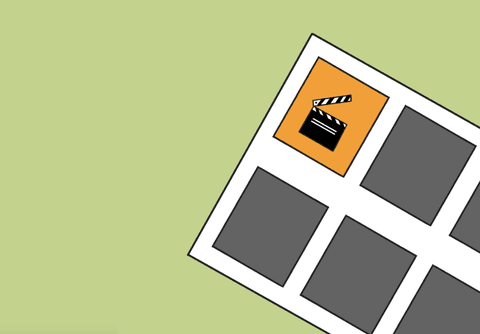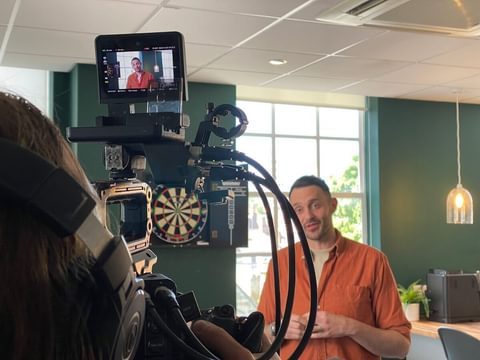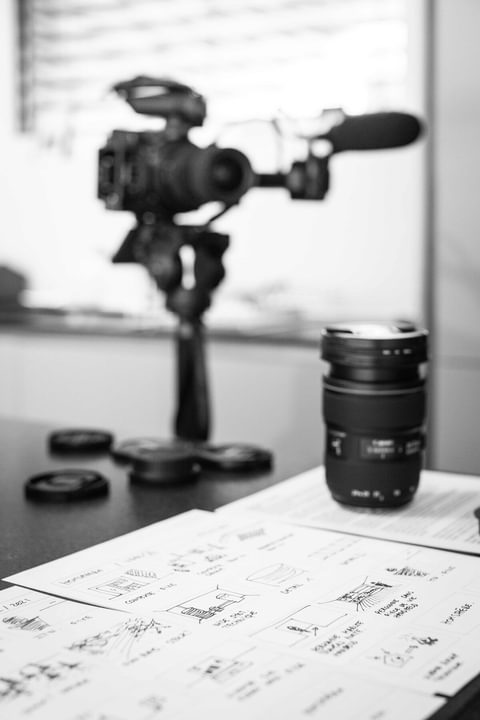NEWS ALERT - We won a SILVER IPM award for Best use of Social Media, 2025! Read more🏆

A storyboard is essential when creating campaigns; it allows collaborative work to come together and helps to ensure the asset has a clear journey to delivery. It's the best way for creatives to get their ideas on paper and share them with their team, as well as the client.
A storyboard is a blueprint of your idea for the campaign. It should be set out in chronological order showing each scene of the video, it will also include notes about lighting, music, background, scripts and maybe even costumes...
Storyboards have been around for quite some time, the first one being created by notorious Disney animator Webb Smit in 1933. The storyboard was made for a Disney Short, ‘The Three Little Pigs.’ Now storyboards are used all over the world by thousands of different creatives every day.
This blog will lead you through all the steps, tips and tricks to take your storyboard to the big screen.
If only we could see into each other's minds to share our ideas and how we want things to look! Luckily, storyboards are the next best thing you can use to achieve this.
When creating a campaign, there is always going to be a team of people working on it together, from the designers right through to the person who publishes the final content. Everyone involved needs to be aligned on the direction and what needs to be done.
A storyboard is essentially a set of visual instructions. For the team to be able to produce what is required, the storyboard must be as detailed as possible. Trust us, it’s not as simple as just drawing a few stick men and calling it a day. You need to be as specific as possible because other people will need to understand exactly what you’re visualising to make the vision come to life.
Within your storyboard, you should be sure to include:
Scene numbers
Design details
Dialogue
Stage directions
Lighting
Background
Music
Costumes
Each of these elements will bring your storyboard to life; including EVERY bit of detail will help you and your team create the best outcome possible.
Interested in what the storyboard process looks like? Check out Jess, one of our amazing creative team, working away on her storyboard for a recent campaign here.
Okay, so you have a storyboard, the team has seen it and analysed it, and now it’s time to produce the campaign. Undoubtedly, this is the most stressful but most exciting part. This is the part where you will be faced with multiple challenges and may have to make many changes to your storyboard, but don’t panic, this is fine.
Anyway, now it’s time to touch on the hard part...
You will most likely need to make changes to your storyboard multiple times over the course of producing the campaign, as sometimes seeing something in person will change the whole visualisation. Every change you decide to make needs to go into the storyboard. Now, we understand that this part may be a little overwhelming and will certainly take time, but stick with it. At Together, we have worked with many brands offering help in their marketing campaign processes, all you need to do is get in touch and we will lend a helping hand and take all the stress out of creating a new ad campaign.

Once you have a piece nearing completion, you’ll need to edit it. Adding in your music, smoothing out the cuts between scenes, and adding any text or filter overlays. This is the part that will really take your project to the next level and bring it to life. All the notes on your storyboard will be vital here; that’s why we stressed the importance of including as much details as possible earlier.

We’ve reached the final stretch! Your project is ready to go live, so now we need to think about the last few objectives to bring your storyboard to screen.
Based on your campaign, you need to decide which platform you will be uploading it to. Whether that’s Instagram, Youtube, LinkedIn, Facebook or even on TV. Before creating your storyboard you would’ve decided on who you’re targeting and this will have also included the platform that you are pushing your campaign out on. For example, if you’re targeting businesses, LinkedIn is more likely to be your go-to as it is the powerhouse for B2B, whereas if you’re targeting consumers, Instagram, YouTube and Facebook would be stronger options.
The next part to consider is the time you’ll be uploading. You need to find a prime time for your audience, this can easily be researched and decided, especially if you’re using scheduling software.
Finally, don’t forget to consider your caption. If you’re uploading your video on social media you will most likely need a caption. Think of something catchy and engaging, you only have about 8 seconds before a consumer clicks off your video, so make that caption appealing and match the tone of the campaign.
Coming from storyboard to screen is a simple process as long as you follow the steps above and do all your necessary research. Like in any marketing campaign, there will be some areas you struggle with but we’re always happy to help, we know the ins and outs of branding, filming, editing, photography and more. So if you’re looking to start a project get in touch with us today. We’re more than happy to work together to bring your ideas to life!
_____
Photo credits:
Animated illustration by Jess White.
Top photo of our CSD, Will Hallam, during an agency shoot.
Bottom photo by dix sept on Unsplash.